How To Teach Your Puppy To Drop It?
As any dog owner knows, puppies tend to put everything in their mouths. While this is often harmless enough, it can quickly become a problem if your puppy starts chewing on something he shouldn’t.
To prevent this from happening, it’s important to teach your puppy the “drop it” command. This will help them understand that there are some things they should not put in their mouth. The best way to teach this command is through positive reinforcement.
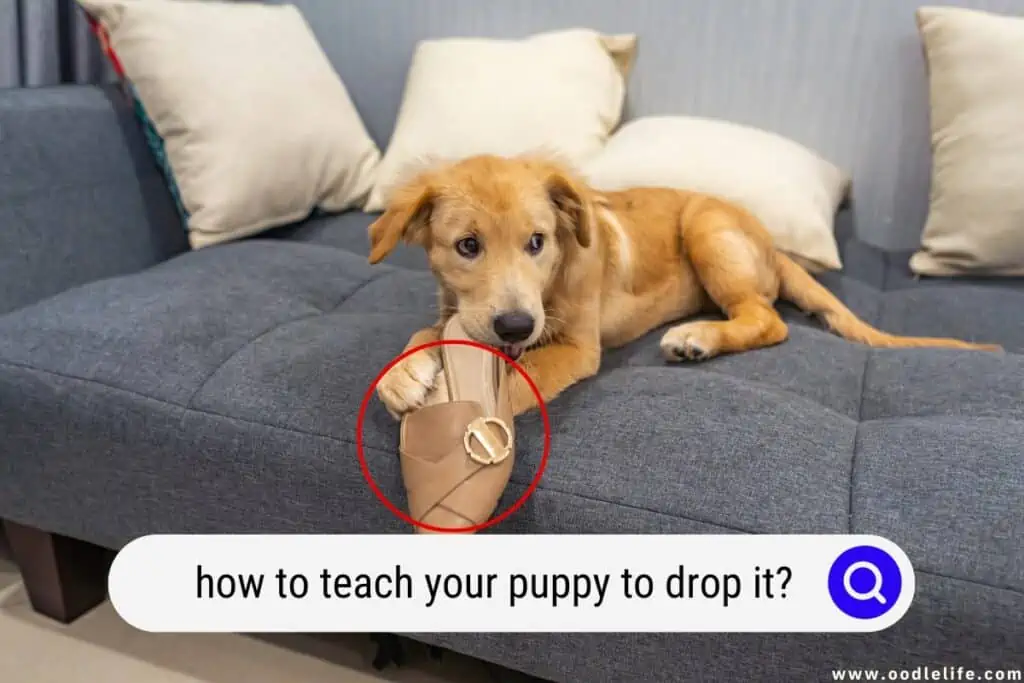
When your puppy drops something on command, be sure to give him plenty of praise and treats. With a little patience and perseverance, you’ll soon have a puppy who knows exactly what “drop it” means.
Why Teaching Your Dog the “Drop It” Command is Important?
You’re out for a walk with your dog when they suddenly spot a rabbit and take off after it. You call after him to come back, but he’s too focused on his prey to listen. As he gets further and further away, you start to panic.
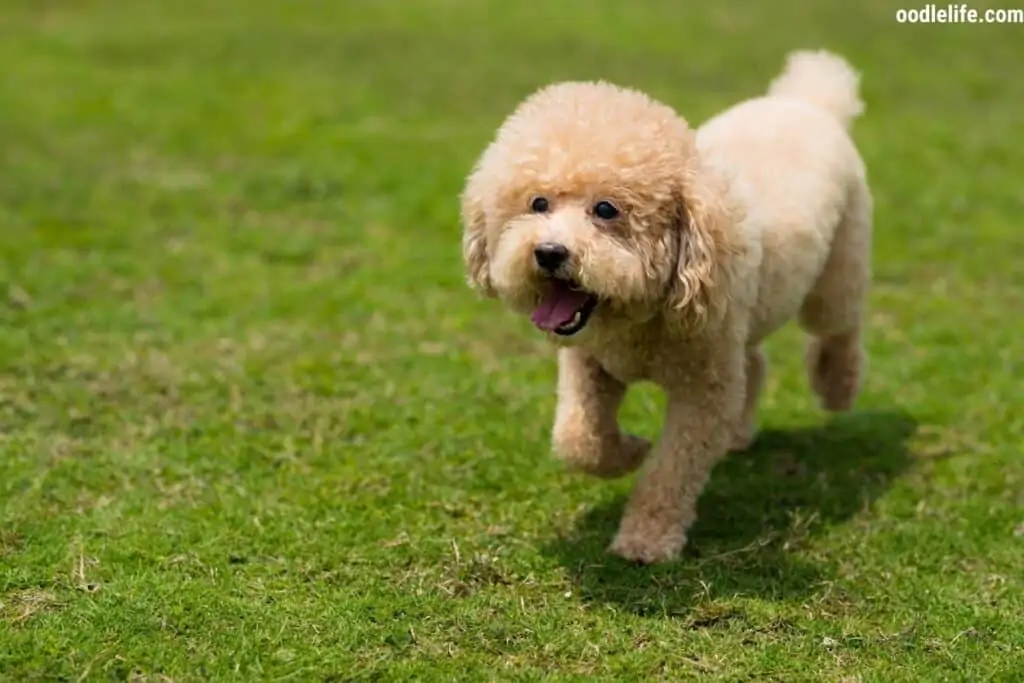
What do you do?
One of the most essential commands you can teach your dog is the “drop it” command. This command can be helpful in situations like the one described above, as well as many others.
The “drop it” command tells your dog to let go of whatever they’ve got in his mouth. This can be helpful if they’ve picked up something dangerous, like a piece of glass or sharp metal, or if they’re chewing on something they shouldn’t be, like your favorite pair of shoes.
It’s also a good idea to teach your dog this command in case he ever picks up something that belongs to someone else, like a child’s toy. If he knows the “drop it” command, you can tell him to let go of the toy and avoid a potential confrontation.
Finally, the “drop it” command can be helpful in situations where your dog is running after something, and you need to get his attention. For example, if he’s chasing a squirrel up a tree, you can use the “drop it” command to get him to stop and come back to you.
How to Train Your Pup to Drop It?
While it may seem harmless enough, this behavior can actually be quite dangerous. Dogs can easily choke on small objects, and they’re also at risk of ingesting harmful bacteria from things they pick up off the ground. So how do you train your pup to “drop it?”
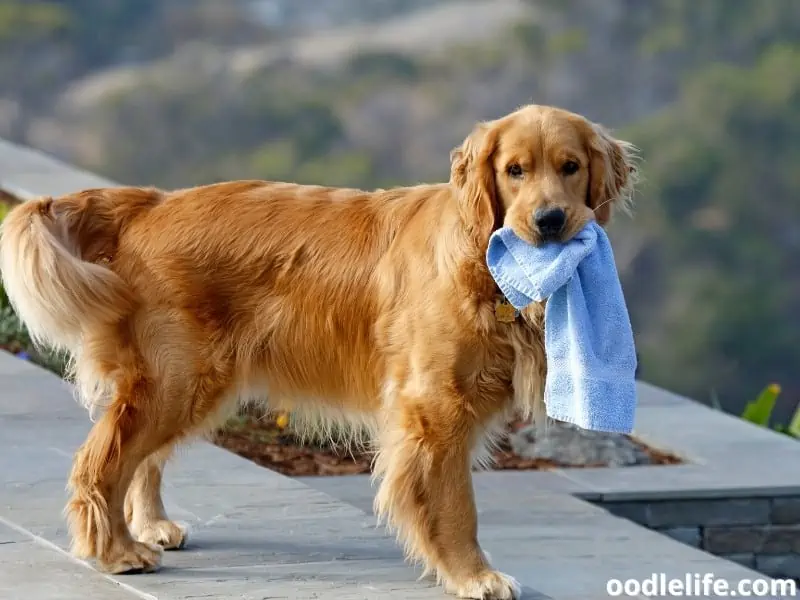
Read on to find out what steps you should take!
- Step 1: The first step is to offer your pup an inexpensive toy they can chew on instead of your shoes or other objects around the house.
- Step 2: As soon as your pup gets a hold of the toy, click and then offer him something delicious. The vast majority of dogs will relinquish the toy in order to acquire the treat. Dogs who have had lots of practice with the clicker may even release it as soon as they hear it.
- Step 3: By now, the toy should be on the ground, and your pup should be eating the snack. Once your dog is done with the treat, pick up the toy again and offer it back. If they’ve already eaten the snack, drop a few more snacks near where the toy was originally dropped, then pick them up to play again.
- Step 4: Now that your dog associates the click sound with dropping the toy, start saying your “drop it” cue after you give your dog the toy, but before clicking. Some fun drop-it commands might include creative ones such as “Yuck,” “Dads (or Moms),” and even “Trade!” The ideal cue is said in a cheerful or neutral tone rather than angry since an angered voice is more likely to make your dog run away or swallow the item out of fear.
- Step 5: When you say your verbal drop it command and pull the toy back, your dog should begin to drop it after repeating Step 4 a few times. Begin delaying the click until AFTER the toy has fallen to the ground once this happens. Then, continue with a treat as usual (always).
- Step 6: Repeat this process with as many distinct objects as feasible in various settings. Begin in quiet areas, such as your living room, with toys that are somewhat uninteresting, like tissues or sticks. More intriguing items should be gradually introduced—such as tissues or sticks—starting in quiet locations and working your way up to more exciting things.
- Step 7: Remember to keep practicing! Like most things in life, learning how to “drop it” is a skill that needs to be practiced regularly in order for your pup to retain it. Make sure to review the cue with your puppy regularly, and try to mix things up by using different objects and locations. This will help keep your pup’s attention focused and make sure that he doesn’t get bored.
With a bit of patience and practice, you’ll be able to teach your pup the “drop it” command in no time! And once he’s mastered it, you can rest assured knowing that he won’t be choking on small objects or ingesting harmful bacteria.
Issues That Can Arise During Training
Your Dog is More Interested in the Toy Than the Treat
If your dog is more interested in the toy than the treat, try using a higher-value treat. Something meaty usually does the trick! You can also try showing your dog the treat before giving him the toy—this will help him understand that he needs to drop the toy in order to get the good stuff.
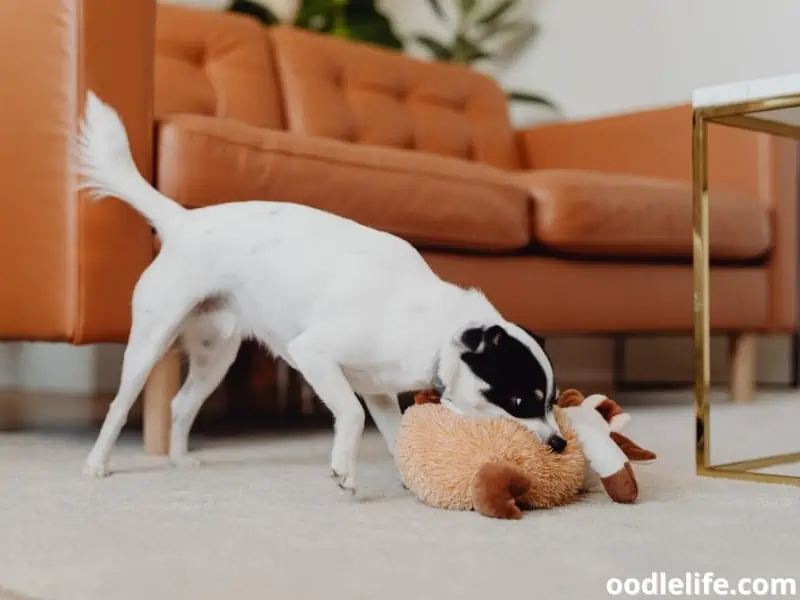
Your Dog Keeps Grabbing for the Toy Even After You’ve Clicked
If your dog keeps grabbing for the toy even after you’ve clicked, it’s possible that he didn’t hear the clicker or that he wasn’t paying attention. Make sure you’re clicking loudly enough, and try to get his attention before offering him the toy. You can also try using a different cue word such as “trade” or “give” instead of “drop it.”
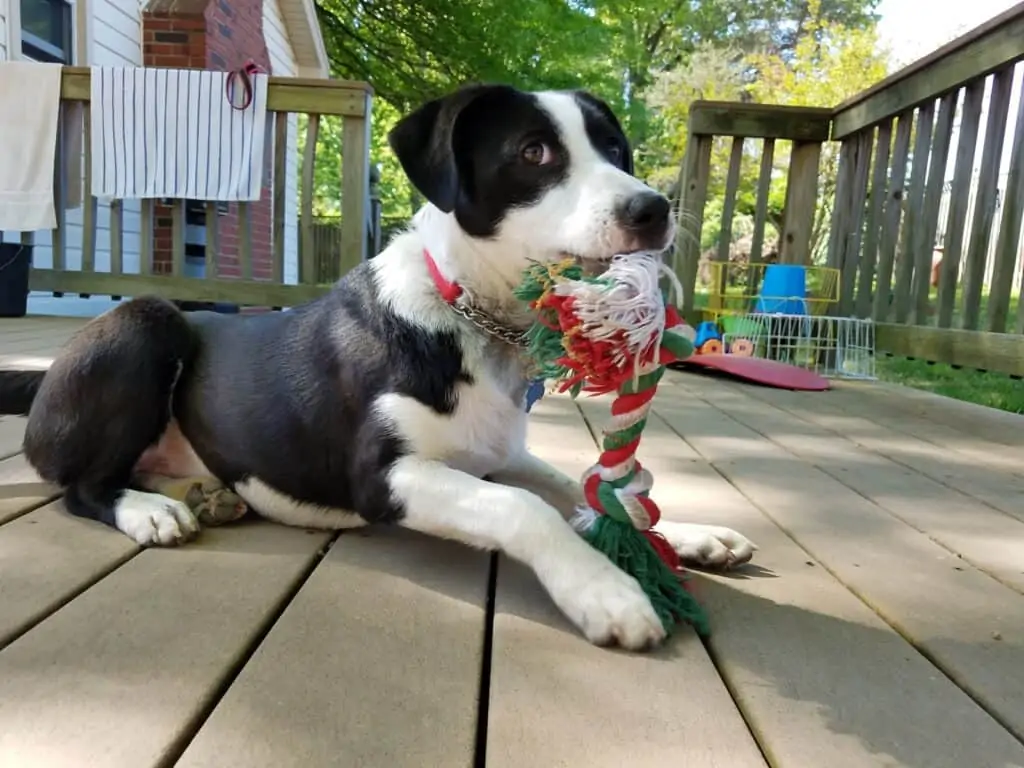
Your Dog Won’t Give Up the Toy
If your dog won’t give up the toy no matter what, try using a toy he’s not as attached to. You can also try holding onto the toy while you offer him the treat—this way, he won’t be able to run off with it. Finally, if all else fails, you can try giving him a time-out—place him in his crate or another room for a few minutes before trying again.
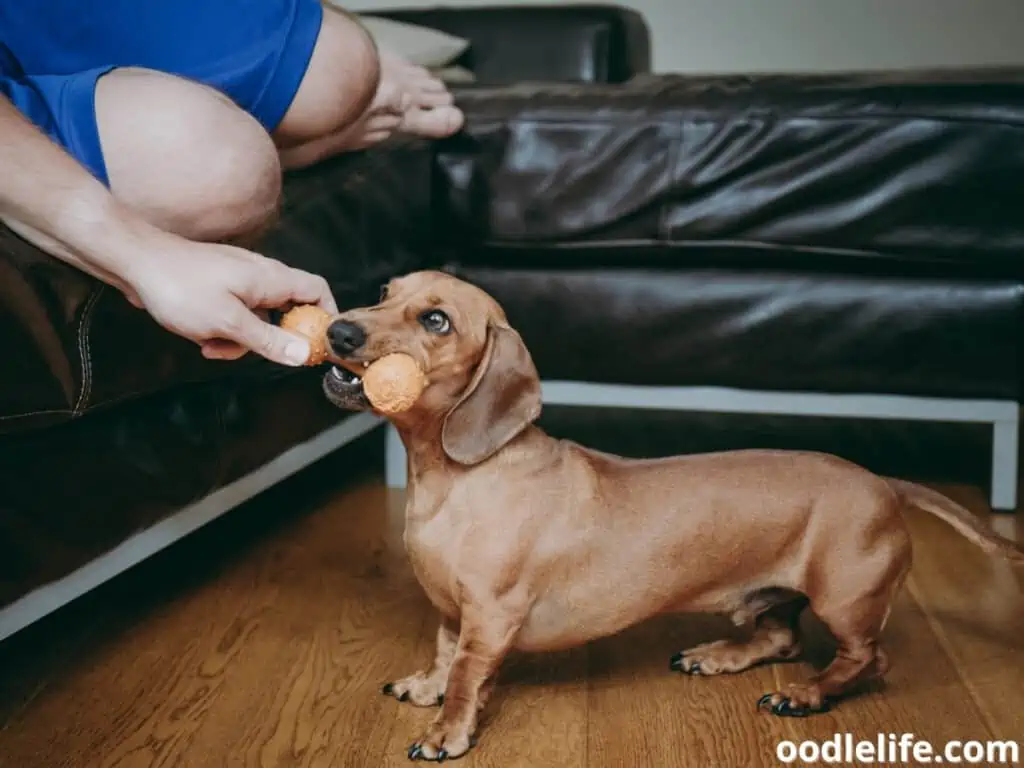
Your Pup Wants the Treat More Than the Toy
If your pup seems more interested in the treat than the toy, try using a lower-value treat. Something like kibble usually does the trick!
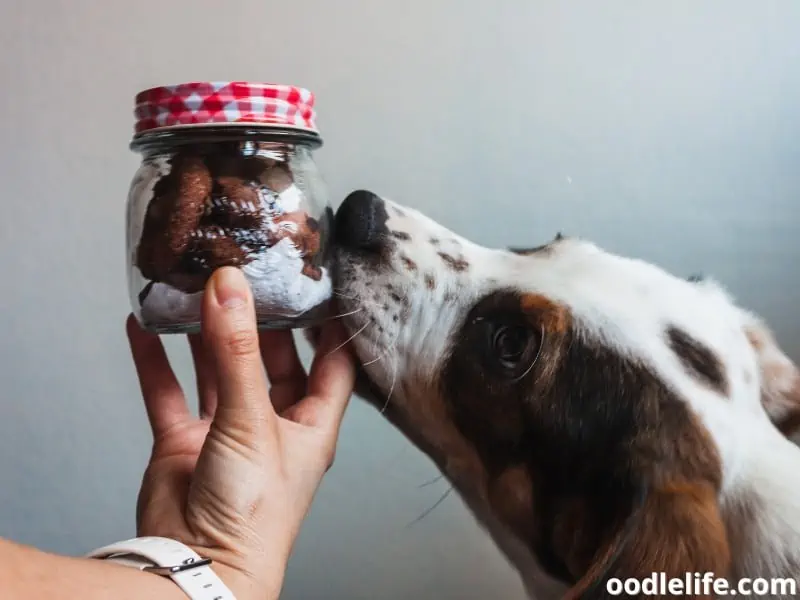
You Didn’t Click Soon Enough
If you didn’t click soon enough, your dog might have already swallowed the object by the time you clicked. In this case, it’s best to start over from scratch—take away the object and offer it again, making sure to click as soon as he drops it.
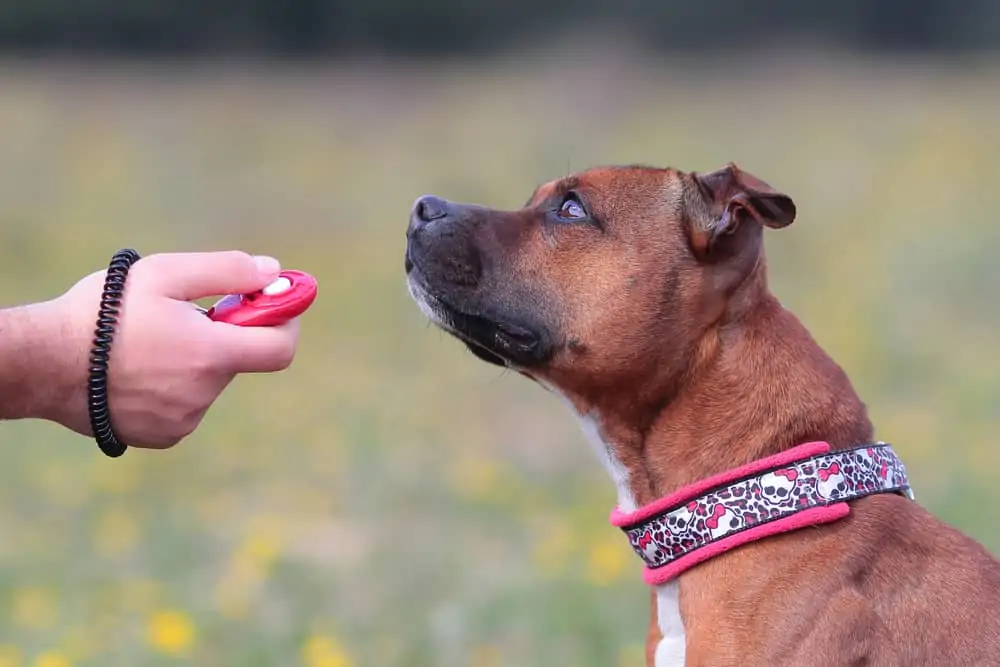
Your Dog is Afraid of the Clicker
If your dog seems afraid of the clicker, try offering him a treat every time you click it. You can also try clicking it near him while he’s eating his food or playing with a toy—this will help him associate the sound with something positive.
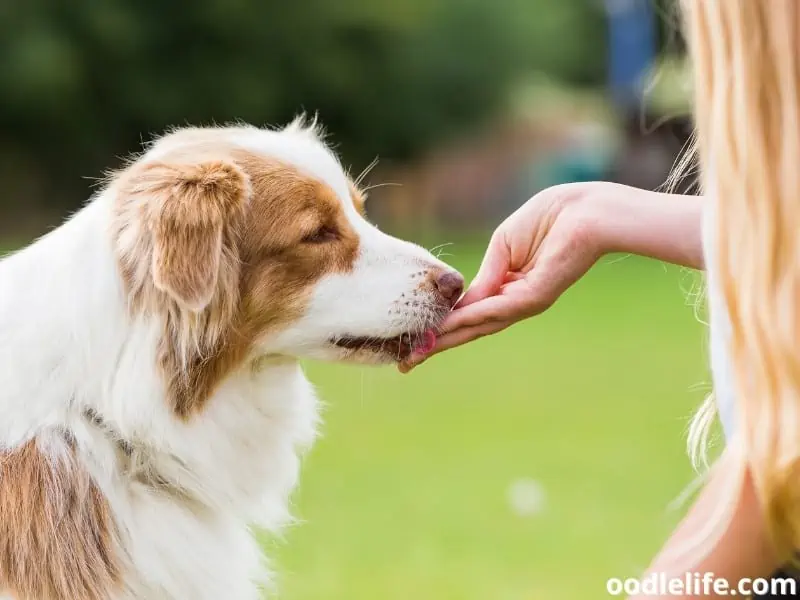
You’re Moving Too Fast
If your dog isn’t responding to the cue or is having trouble dropping the object, you may be moving too fast. Try going back to Step 2 and working your way up again—take things slow and be sure to click as soon as your dog drops the object.
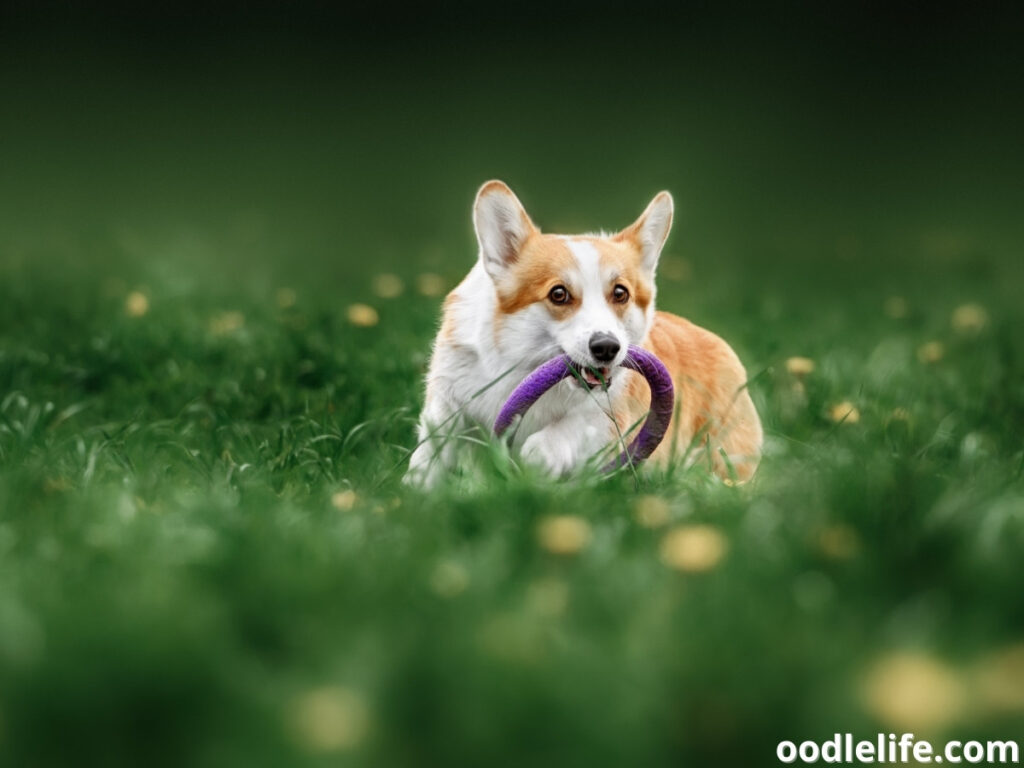
Your Dog Is Getting Bored
If your dog seems bored or uninterested in the training, it’s possible that he’s not being challenged enough. Try using more interesting objects, such as toys or treats, and mix up the location and environment so that he doesn’t get too comfortable. You can also try incorporating some basic obedience commands such as “sit” or “stay” to keep things interesting.
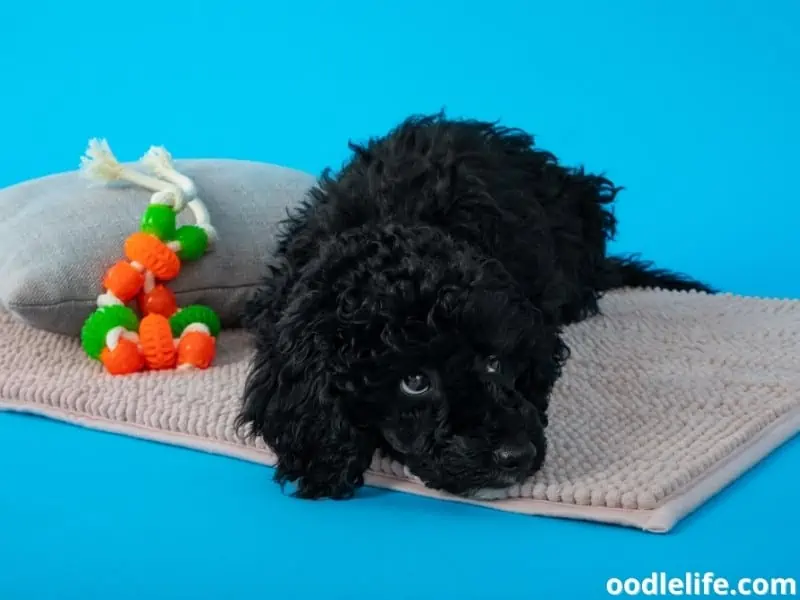
Your Dog Is Distracted
If your dog is having trouble focusing, it’s possible he’s being distracted by his surroundings. Try training in a quiet room with few distractions, and be sure to have plenty of treats on hand to help keep his attention focused. You can also try using a clicker or target stick to help him focus on the task at hand.
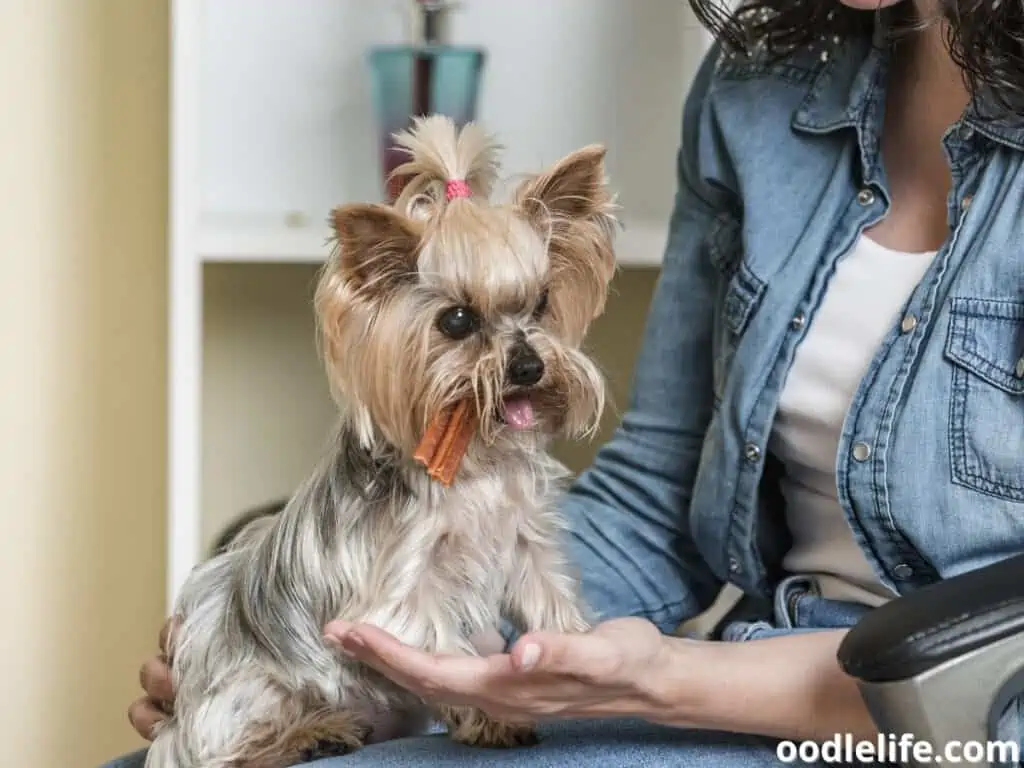
Your Dog Is Stressed
If your dog seems stressed or anxious during training, it’s important to take a break and let him calm down. Training should be a positive experience for both you and your dog—if he’s not enjoying it, it’s not worth forcing him to continue. Instead, try again another day, and be sure to use plenty of treats and praise to help keep things positive.
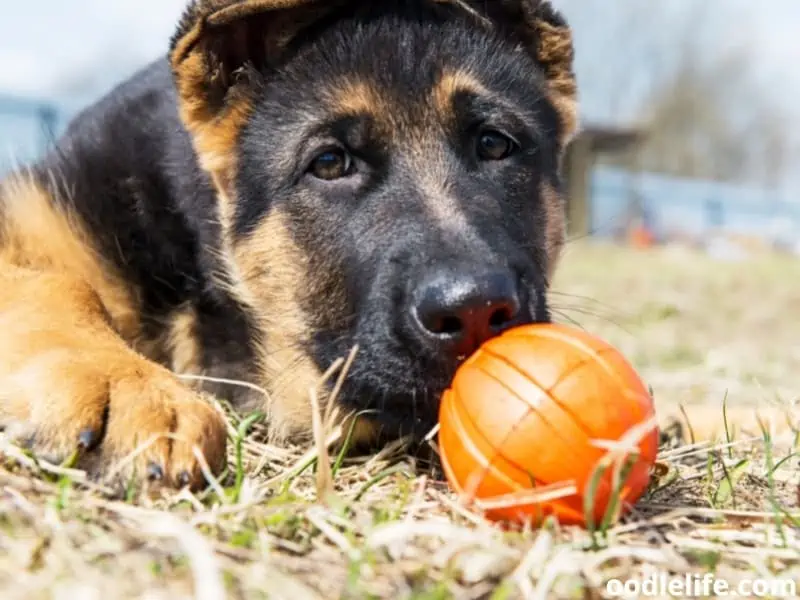
Common Mistakes
- Not rewarding your dog often enough: If you’re not rewarding your dog frequently enough, he may become frustrated or bored with the training. So be sure to click and treat often, especially when first starting out.
- Not being consistent: It’s important to be consistent with your commands and cues—if you use different words or gestures each time, your dog will become confused. Stick to one cue and one command, and be sure to use it every time.
- Moving too fast: If you move too fast, your dog may become overwhelmed or confused. Take things slowly, and be sure to click as soon as your dog drops the object.
- Not being patient: Training takes time and patience—if you get frustrated or angry, your dog will pick up on that and become stressed. So be sure to take breaks if needed, and always end on a positive note.
Learning how to “drop it” is an excellent skill for your pup, and it can come in handy in various situations. With a little bit of patience and practice, you’ll be able to teach your puppy this valuable command in no time!